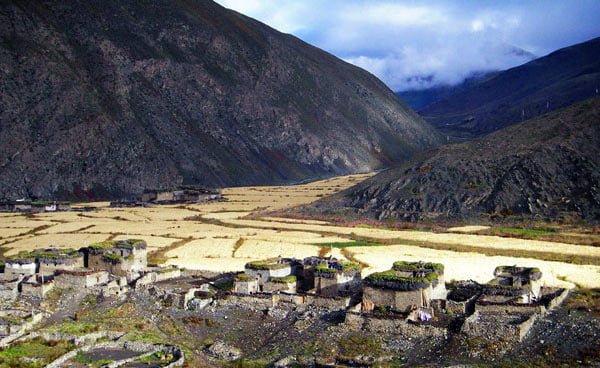Upper Dolpo Trek is an off-beat trek in the far northwest region of Nepal which is a unique experience for travelers seeking challenges and newness. Occupying a large area in the northwest of Nepal; Dolpo (also called Dolpa) is an arid, desert-like high mountain region lying in the Himalayan rain shadow. The region falls between the Great Himalayan Mountain range running along the southern edges of this region and the lesser Himalayan range bordering Tibet.
Is this Upper Dolpo Trek for me?
Physical Grading: Strenuous
A strenuous trek that demands trekkers/travelers to have a top-notch level of physical and mental fitness to trek daily for long hours at high altitudes.
Max Elevation: 5,375m (Kang La Pass)
Cherish the stunning views of snowy mountains and beautiful valleys from the top of the pass.
Accommodation: Hotel/Lodge/Tent
Basic but comfortable accommodation with limited facilities and tented camping during the trek and a standard hotel in a city.
Meals: Full Board
3-course Healthy and Hygienic meals during the trek, and only breakfast in a city.
Best Season: Autumn & Spring
Clear views and comfortable trekking trails due to stable weather and temperature.
Trip Route:
Juphal – Chhepka – Amchi Hospital – Ringmo Gaun – Chunemba – Snowfield Camp – Kang La Pass – Shey Gompa – Shey La- Namgung – Saldang – Sibu – Jeng La Phedi – Jeng La Pass – Tokyu – Dho Tarap – Sisaul – Laina Odar – Lingdo - Juphal
Upper Dolpo Trek Highlights
- Less-explored and off-beat trek
- Mesmerizing Shey Phoksundo Lake
- Diverse wildlife and natural attractions
- Highest Kang La Pass (5,375 m)
- Tented Camping
- Traverse through beautiful villages (Chumling, Chhokangparo, Nile)
- Buddhist Monasteries and Milarepa Cave
- Untouched nature and varying cultures and ethnicities
- Immerse yourself in the Himalayan lifestyle and culture of locals
- Stunning views of snow-capped peaks (Siring Himal, Buddha Himal, Tabsar Himal, etc.)
Upper Dolpo Trek Overview
Lying as it is beyond the Himalayas, Upper Dolpo is one of the remotest districts in Nepal. However, it has been a region of curiosity for anthropologists and geographers. Eric Valley made the harsh lives of people, who live here by adjusting to the extremely hostile environment, the subject of his film “Caravan”. The images of this film, released in 1997, have since lingered in everyone’s mind.
But alpine desert-like land alone does not dominate this region. Nepal’s biggest national park, the Shey Phokshundo, is located in this region. The park derives its name from a monastery named Shey, and a huge glacial lake named Phoksundo. Together the park is meant to protect both the natural ecology and culture of the area. The park is home to such rare wildlife like Musk Deer, Himalayan Blue Sheep, and Snow Leopard. The occupations of people living here are animal husbandry and trade with Tibet.
In the Upper Dolpo trek, we will pass through several villages, valleys, and forest areas with coniferous vegetation above several passes including the highest Kang La Pass (5,375 m). We will spend a day or two in Ringmo village near the lake and then visit the legendary Shey monastery as well. This trek is intended to take you to this mysterious place and explore its unique lifestyle and strange land formations.






